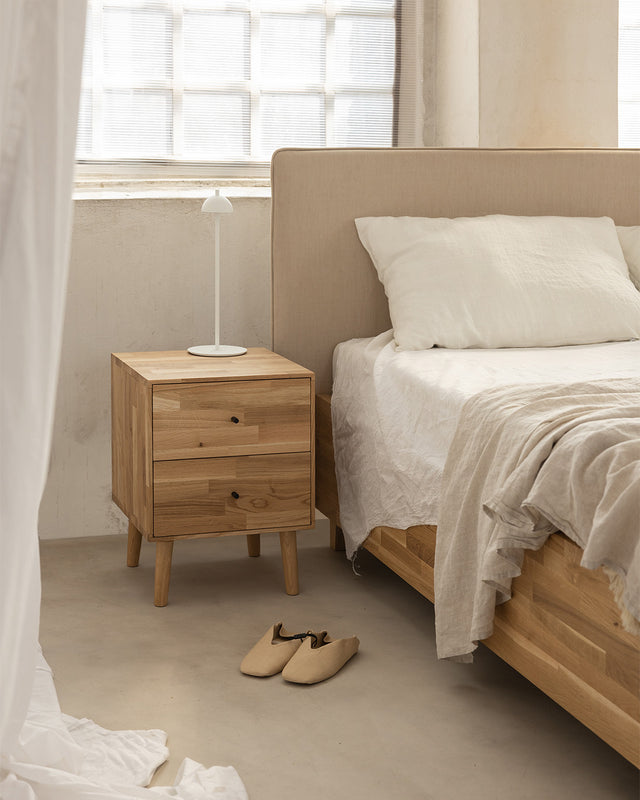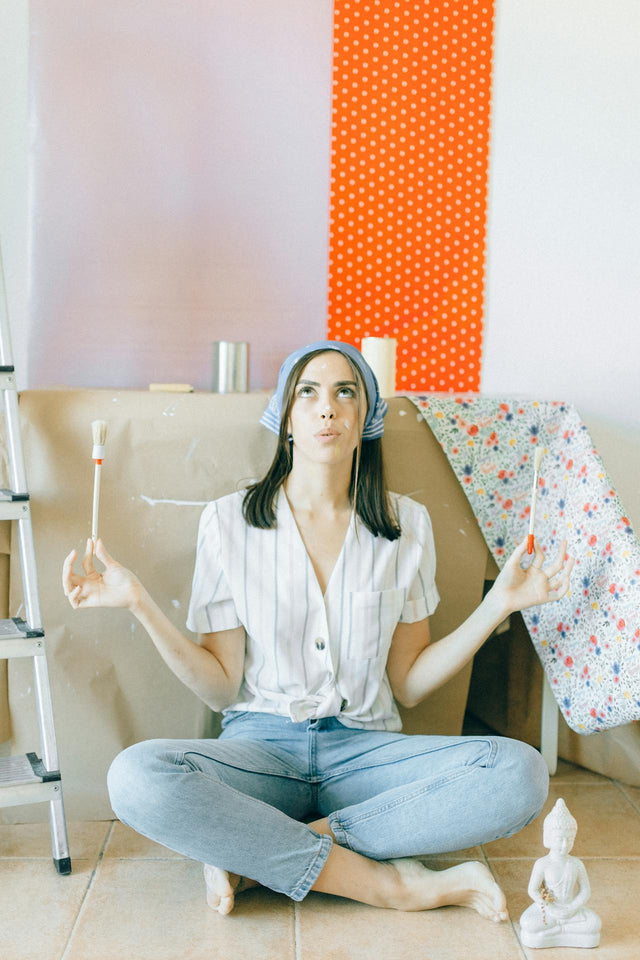Industrial style - how does it differ from loft style?
Industrial style and loft style are two unique interior styles that often seem to be closely related to each other. After all, both draw inspiration from industrial roots and are characterized by rawness and unique charm. Nevertheless, despite some similarities, there are fundamental differences that separate these two arrangements from each other. Interior designers, in particular, are currently paying a lot of attention to separating industrial-style arrangements from loft-style ones. Below we will try to describe each of them in more detail. We will discuss the atmosphere of the interior, the furniture and accessories used.

Industrial style – what makes it stand out?
The industrial style is inspired primarily by industry, referring to the interiors of factories, warehouses and old industrial plants. It is an aesthetic that arose with the industrial revolution and delights with its severity and simplicity. The main features that distinguish the industrial style from others include:
Austerity and minimalist character
In the industrial style, austerity is key. The interiors are kept in a minimalist style, devoid of unnecessary ornaments and decorations. Raw walls, raw beams, pipes and other structural elements are left visible, giving the space its distinctive look and emphasizing the industrial interior design.

The use of metal, concrete and wood
The main materials used in the industrial style are metal, concrete and wood. Metal shelving and other components such as pipes, steel beams, and metal furniture are common. Concrete floors and walls give the space a raw character, while wood adds warmth and contrast.
Large industrial windows
An industrial style apartment also includes large industrial windows or loft windows. They are a very common element of the raw industrial style. They allow a lot of natural light to enter the interior and create a connection with the industrial courtyard or surroundings, especially since this type of arrangements have evolved and, apart from the fact that we have open spaces, high ceilings or visible electrical installations, the industrial interior also wants to create a cozy atmosphere.
Exposed installations
As we mentioned above, in the industrial style, pipes, electrical wires and other installations are often left exposed. This not only gives the space an authentic character, but also reminds you of the original use of the space.
Use of vintage and recycled furniture
Vintage furniture and accessories as well as recycled elements are welcome in the industrial style. Minimal forms of furniture can be created by, for example, old factory chairs, metal boxes or wooden pallets, which give the space an authentic character.
Harsh climate
The industrial style can create a slightly raw atmosphere. This is not a style that favors warm, cozy interiors, but it is perfect for those who value austere aesthetics. This is also the finishing of the walls, which is accompanied by, among others, photographs referring to the roots of the style, geometric mirrors or equally raw accessories inspired by the industrial and factory character.

Loft-style interiors – characteristic features
The loft style, as we already know, is closely related to living spaces in old factories and warehouses that have been transformed into apartments or offices. It is an aesthetic that draws from industrial roots, but has its own characteristics that combine but also share this style with the industrial style. Here are the main features of the loft style:
Large, open spaces
Loft interiors are known for their huge, open spaces that often connect different areas, such as the living room, kitchen and bedroom, without traditional partition walls. This open space concept promotes the free flow and integration of various areas of life.
Raw industrial elements
As in the case of the industrial style, a loft atmosphere often displays raw industrial elements, such as metal beams, pipes and other construction details. However, in the case of lofts, these elements often constitute a background for more modern interiors.
Industrial windows
Large industrial windows are a characteristic element of a loft living room. They allow a lot of natural light to enter the interior and give the space an open character. These windows are often located along one wall, creating a unique focal point and adding to the factory aesthetic.
Minimalism and simplicity
The loft style is often minimalist and simple. It is characterized by a small amount of ornaments and decorations. This simplicity emphasizes the raw character of the interior. So if we want to have a loft-style apartment, we should remember to exercise moderation in open spaces.
Open kitchen
In the loft style, kitchens are often part of an open living room, which helps integrate the space and creates an extremely fashionable interior. This is the perfect solution for those who love cooking and being part of the conversations taking place in the living room at the same time.
Use of raw materials
Similar to the industrial style, the loft style also uses metal, concrete and wood, but may be more focused on natural materials such as wood to bring warmth to the space.
Interiors in industrial and loft style. What are the similarities and differences?
Although industrial and loft styles draw inspiration from industrial roots and use some common elements, there are also distinct differences between the two styles. Here are the main similarities and differences:
Similarities:
Raw, unprocessed elements
Both styles use raw and unworked structural elements such as pipes, beams and industrial windows. In both cases, these elements remain visible, which gives the space a raw character.
Large spaces
Both the industrial and loft styles are characterized by large, open spaces with a common aesthetic that allow for free flow and integration of different areas.
The use of metal, concrete and wood
The main materials used in both styles are metal, concrete and wood. These materials give spaces a distinctive industrial look. In both cases, a basic color palette is used with strong accents - brick walls, metal lampshades or a wooden countertop against the background of ubiquitous austerity.
Differences:
Character and atmosphere
The industrial style can introduce a raw atmosphere, while the loft style is more focused on creating pleasant and comfortable interiors. Lofts often have a more modern look than traditional industrial interiors. The loft style more often uses wood and other cozy elements, such as hanging lamps or comfortable sofas. Therefore, this style is more often chosen by people who value a bit more comfort and a cozy atmosphere.
Decorations and accessories
The industrial style is minimalist and simple, with few ornaments and decorations. In the loft style, more modern and designer accessories can be used, which give the space an individual character in its austerity.
Open kitchen
An open kitchen is a more common element of the loft style than the industrial style. In an industrial style, kitchens are often more traditional and separated from other areas.
Use of natural materials
The loft style may be more focused on the use of natural materials, such as wood, to introduce warmth into the space, while the industrial style focuses on austerity and uses more industrial materials, such as architectural concrete or other industrial accessories or minimalist forms of furniture.
Furniture in industrial interiors
Furniture plays a key role in industrial interiors, adding both functionality and style. They also create a unique industrial atmosphere, which has its own characteristic features. Here are some of them in industrial interiors:
- Metal accents: Furniture with metal frames, legs or fittings is common. Coffee tables, dining tables and chairs with metal elements add austerity and an industrial character to the space.
- Leather: Leather sofas and armchairs are a popular choice in industrial interiors. Leather gives the furniture elegance and contrasts with the raw industrial elements.
- Wood: Wooden furniture, especially those made of raw wood or with a distinct, natural finish, bring warmth and coziness to the interior.
- Recycling: Industrial style often uses furniture made from recycled materials, such as pallets, old boxes or structural elements.
- Simplicity: Industrial-style furniture is usually simple and functional. Their structure is often visible, which emphasizes the raw nature of the interior.

Industrial and loft decor – lighting and accessories
Lighting and accessories play a key role in shaping the character of an industrial or loft-style interior. Here are some tips that we should remember if we are decorating an apartment in an industrial or loft style.
Lighting:
- Industrial hanging lamps: Industrial-style hanging lamps, often made of metal and glass, are an excellent choice if you have a loft interior. They can become both a source of light and a decorative accent.
- Lamps on cables: Lamps on long cables, suspended from the ceiling or hanging over the table, add charm to the space in industrial interiors.
- Exposed light bulbs: The use of exposed light bulbs, especially in large industrial windows, gives the space a raw character and creates a unique atmosphere.
Accessories:
- Pillows and blankets: Loft-style pillows and blankets often feature soft, natural fabrics and subdued colors that add coziness to the space.
- Posters and street art: Posters, graffiti or street art on the walls can add a unique character to the interior and emphasize its youthful, urban style.
- Flowers and plants: Potted plants add a natural accent to stark spaces. Moreover, the loft apartment will then be much warmer and cozier.
- Metal accessories: Metal accessories such as low stools, clothes hangers or flower pots are perfect for the industrial style, giving it a raw, industrial look.
- Textiles: Thick, natural fabrics such as linen or jute can be used for curtains, tablecloths and wall decorations, giving the interior an authentic industrial look.
It is worth remembering that both the industrial and loft styles allow you to experiment and adapt the space to your own preferences. Ultimately, it is personal accessories and the choice of lighting that determine the character of the interior, creating a unique and unique design. Regardless of whether we choose the industrial style or loft spaces, we must remember about certain elements dedicated to a given type of interior. This applies to the selection of furniture, accessories and wall colors.




















